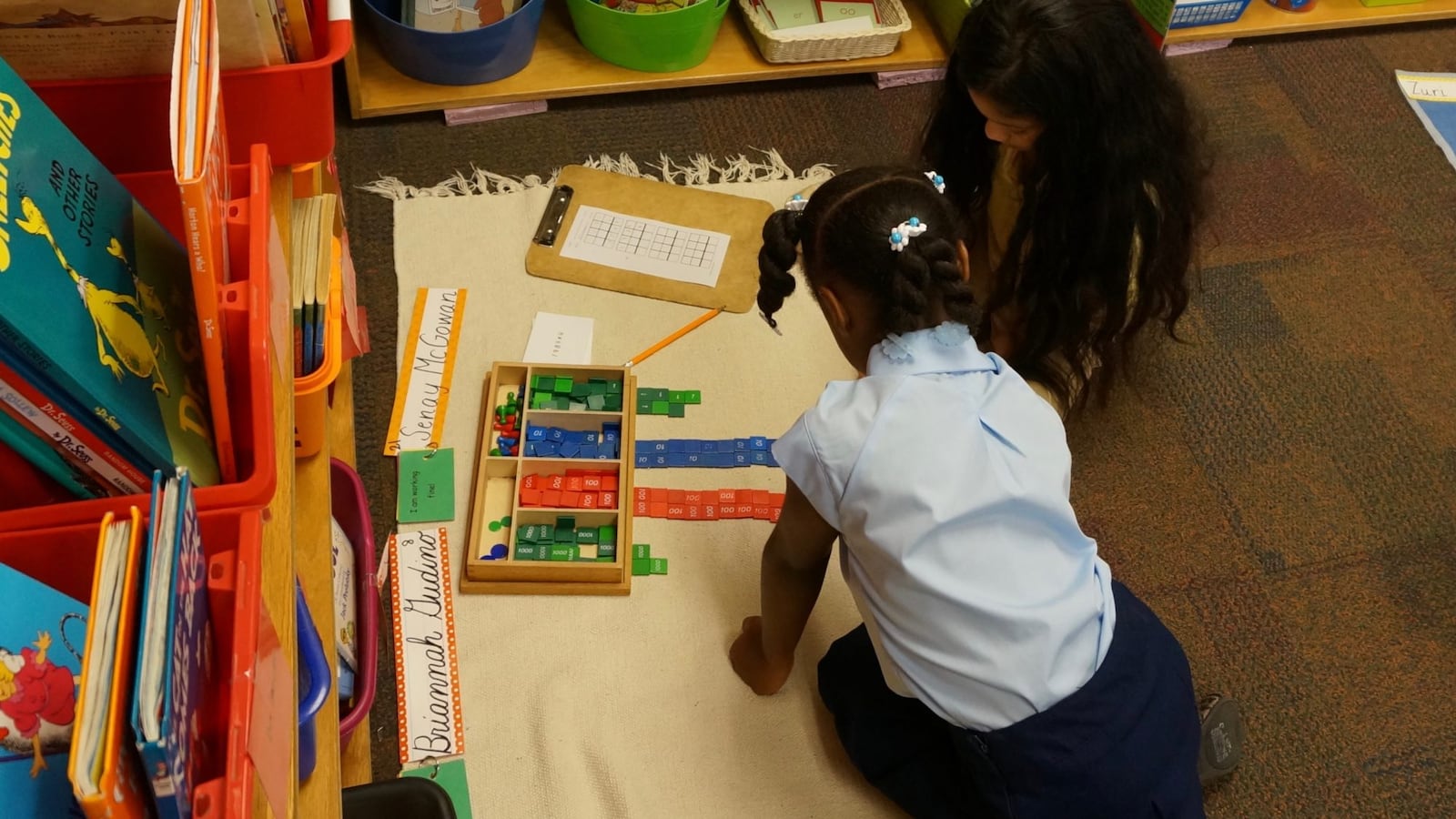When Sara Martin and her husband looked at elementary schools for their son three years ago, they were hoping for a spot at one of Indianapolis Public Schools’ most sought-after magnet programs. Instead, they landed at School 87, a Montessori school in a poor neighborhood that is among the magnets that typically have open seats after the district lottery.
The Martins, who had included the school among their choices without even going for a tour, were convinced after visiting the westside school and seeing happy students working independently. “I just kind of fell in love with it,” Sara Martin said.
Since the Martins were placed there, however, School 87 has gone from not quite filling its seats to quickly reaching capacity this fall. Nearly 340 students applied to School 87 this year — about four times the number that applied two years ago, according to district data. Enrollment has also grown slightly, reaching about 370 students this year compared to about 340 students in 2016-17.
And unlike some of the most popular magnet schools that primarily serve families who are middle class or white, School 87’s demographics nearly mirror the rest of the district. Most students are poor enough to get discounted meals, and the student population is racially diverse. The school is also in a poor neighborhood north west of downtown, which is significant because families who live within about a half a mile of a magnet school have priority in admission.
There are lots of reasons why School 87, which is also known as George Washington Carver, could be growing more popular. This year, the prekindergarten-8th grade school likely got a boost from Enroll Indy, a new enrollment system that allows families to apply for Indianapolis Public Schools and many charter school options through a single website. The nonprofit did extensive outreach to families, and more students applied to magnet schools across the district.
But applications were already growing, thanks to recruitment efforts and word of mouth. The school has also performed relatively well on standardized tests, and it has a B grade from the state.
School 87, which began as a school-within-a-school, was given its own campus in 2013, one of three in the district that offer Montessori, which calls for students directing their own learning in structured environments. The model has a reputation for attracting affluent, liberal parents, and it has traditionally been confined to private schools.
Indianapolis Public Schools, however, has offered Montessori education for decades. It is an increasingly common option at public schools across the country, and recent research suggests that it benefits children from low-income families.
Kristin Hancock, a teacher who has been with the program since it started, said that while Montessori schools typically attract affluent parents, School 87 continues to serve students from diverse backgrounds.
“We have kids from the neighborhood, kids that are from our old neighborhood … that we’ve still carried on with those families for a really long time,” she said. “We have pretty much just the same kids that anybody else would.”
One reason Sara Martin, whose father is from El Salvador, was drawn to School 87 is because of its diversity. The family lives outside the district, and they chose Indianapolis Public Schools in part because students come from so many backgrounds, Martin said.
That diversity also shapes the admission campaign at School 87. Because it serves a community with many Spanish speakers, they made sure to have Spanish speaking staff members doing outreach, said Principal Mark Nardo.
The school has not made radical changes to its recruitment methods in recent years, but staff members have gotten better at it, Nardo said. The school enrollment committee, which includes teachers and other staff, used a host of approaches to recruiting new families last year. They visited the nearby community center and Head Start programs, hosted an enrollment event to help parents fill out the application, and updated marketing materials. On the side of the building, which sits beside a highway, a banner advertises the program to passing drivers.
The school also attracts students through word-of-mouth, Nardo said, and they encourage families to tell friends and neighbors about the program. “It’s common sense to sit there and talk to your parents that are here and just say, ‘hey, you are an ambassador, please go out and spread the word.’ ”

